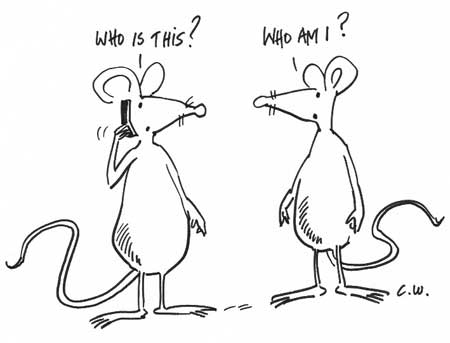|
|
Mobile phones and Alzheimer's Disease |
|
|
|
The recent article in the Journal of Alzheimer's Disease suggesting that the radiation from mobile phones can improve Alzheimer's disease in mice has added much fuel to the controversy over whether or not mobile phone radiation is detrimental to health. However, experts in the field are concerned about the quality of the research - see below. The study carried out by researcher Gary Arendash and colleagues at Florida Alzheimer's Disease Research Center, involved 96 mice, most of which were genetically altered to develop beta-amyloid plaques and memory problems mimicking Alzheimer's disease as they aged. Some mice were left as-is, so researchers could test the effects of the radiation on normal memory as well.
Both the Alzheimer's and normal mice were exposed to the electromagnetic field generated by standard cell phone use for two 1-hour periods each day for seven to nine months. The mice were not actually chatting on cell phone or even packing the devices. Rather, they were housed in cages arranged around a centrally-located antenna that generated a cell-phone signal. The cages were arranged at the same distance from the antenna and exposed to the radiation typically emitted by a cell phone pressed up against a human head. The researchers showed that exposing old Alzheimer's mice to the electromagnetic waves generated by cell phones erased brain deposits of beta-amyloid, a protein strongly associated with Alzheimer's disease. Clumps of beta-amyloid form so-called brain plaques that are a hallmark of the disease. Results showed if cell phone exposure was started when the Alzheimer's mice were young adults — before signs of memory impairment were apparent — their cognitive ability was protected. In fact, the Alzheimer's mice performed as well on tests measuring memory and thinking skills as aged mice without dementia. The cell phone exposure even boosted the memories of normal mice to above-normal levels. The memory benefits took months to show up, suggesting that a similar effect in humans would take years. The researchers suspect the main reason for this improvement involves the ability of electromagnetic radiation to increase brain activity, promoting greater blood flow and increased energy metabolism in the brain. They suspect a similar effect would show up in humans, and so cell phone radiation might be used to prevent and treat the debilitating disease for us, they say. However, studies done on rodents do not always translate to useful human therapies, so more research would be needed.
Comments: Dr Andrew Goldsworthy points out in the article below, there is a crucial difference between the radiation used on the mice (which could be beneficial) and that which occurs when mobile phones or wifis are actually in use: the radiation used on the mice was neither pulsed not modulated – in-use wifi and mobile phone radiation is both pulsed and modulated. I have looked at the original Arendash et al. paper and things are not quite as reported in the press. Unmodulated radiation is less biologically active Radiation hormesis Andrew Goldsworthy BSc PhD – Lecturer in Biology (retired) Imperial College London
From Charles Claessens member Verband Baubiologie Andrew Goldesowrthy states that the signal was not pulsed or modulated. He could be right, but I am not sure.
More articles on mobile phones and masts First Published in Janury 2010 |













